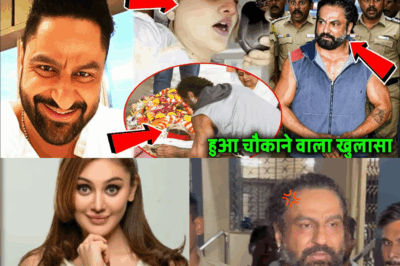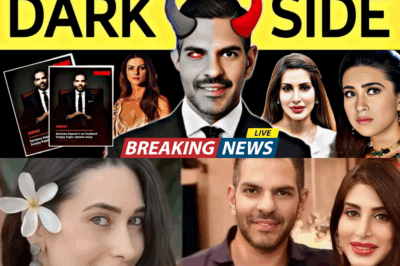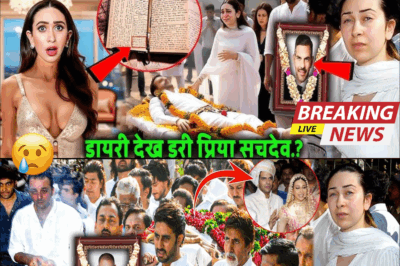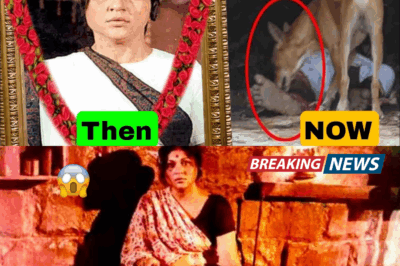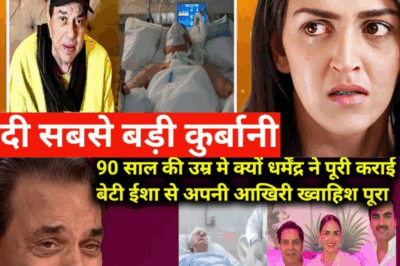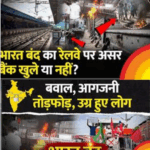The Rise, Resilience, and Recent Silence of Bollywood’s Shotgun: The Untold Story of Shatrughan Sinha
In the dazzling world of Hindi cinema, where stars rise and fall with the tides of public opinion, few have left a mark as indelible as Shatrughan Sinha. Known fondly as “Shotgun” for his booming voice and fiery on-screen persona, Sinha’s journey from the bylanes of Patna to the heart of Bollywood is a testament to relentless ambition, resilience, and an unwavering belief in oneself. Yet, as the years have passed, the very man who once ruled the industry with his commanding presence now finds himself enveloped in an unexpected silence—a silence born not from defeat in the professional arena, but from heartbreak within his own family.
Early Life: A Humble Beginning
Born on July 15, 1945, in Patna, Bihar, Shatrughan Sinha was the youngest of four brothers in a family that revered tradition. His father, a respected doctor, named all his sons after characters from the Ramayana—Ram, Lakhan, Bharat, and Shatrughan—a nod to their cultural roots. Despite growing up in a household with no ties to the film industry, Sinha harbored dreams of acting from an early age. After graduating from Patna Science College, he followed the advice of friends and pursued a diploma at the prestigious Film and Television Institute of India (FTII) in Pune.
The Struggle for a Break
Armed with ambition and a dream to become a hero, Sinha moved to Mumbai—the city of dreams. However, the journey was anything but easy. The industry, notorious for its nepotism and preference for conventionally good-looking actors, was not kind to the young aspirant. Sinha faced repeated rejections, not for lack of talent, but because of a prominent scar on his cheek. Directors and producers were hesitant to cast him, fearing the audience might not accept a hero with such a visible imperfection.
Disheartened but not defeated, Sinha even considered plastic surgery to remove the scar. It was then that legendary actor Dev Anand intervened, advising him to embrace his uniqueness and turn his perceived weakness into his greatest strength. Taking this advice to heart, Sinha decided to own his scar, and in doing so, he carved a niche for himself that no one could replicate.
The Villain Who Became a Hero
Sinha’s big break came not as a hero, but as a villain. His menacing presence, deep voice, and that very scar made him one of the most memorable antagonists in Hindi cinema. Audiences loved to hate him, and soon enough, they just loved him. His dialogue delivery was so impactful that every word he uttered felt like a bullet—earning him the nickname “Shotgun.” This unique identity set him apart in an industry filled with cookie-cutter heroes.
Over time, Sinha transitioned from villainous roles to leading man, starring in over 250 films across more than two decades. Movies like “Khudgarz,” “Kalicharan,” “Naseeb,” “Dostana,” “Kala Patthar,” “Maqabla,” “Mere Apne,” “Bombay to Goa,” and “Shaan” cemented his status as a superstar. Unlike many of his contemporaries, Sinha’s journey was not defined by a film family legacy but by sheer grit and talent.
Beyond Cinema: The Political Foray
Never one to rest on his laurels, Sinha also ventured into politics, winning elections from Bihar and serving as a Member of Parliament. His charisma, straightforwardness, and ability to connect with the masses made him a popular leader. However, the world of politics, much like the film industry, is fraught with challenges, and Sinha faced his share of controversies and setbacks.
The Family Man: Triumphs and Trials
At the heart of Sinha’s life has always been his family. Married to Poonam Sinha, he is the proud father of three children—sons Luv and Kush, and daughter Sonakshi. The Sinha household, affectionately called “Ramayan,” is steeped in tradition, with every family member’s name echoing the epic’s characters.
Sonakshi Sinha, following in her father’s footsteps, entered Bollywood and quickly made a name for herself with her debut in “Dabangg.” However, despite appearing in several films, she struggled to replicate the consistent success of her father. Still, Sinha’s love and support for his daughter have always been unwavering.
The Recent Controversy: A Family Divided
In 2024, the Sinha family found itself at the center of a storm. Sonakshi’s decision to marry Zaheer Iqbal, a fellow actor and a Muslim, became the talk of the town. While interfaith marriages are not uncommon in Bollywood, the union sparked intense debate and speculation, particularly because both of Sonakshi’s brothers, Luv and Kush, chose not to attend the wedding. Videos of the wedding went viral on social media, with some Bollywood celebrities in attendance while others conspicuously absent.
For Shatrughan Sinha, the situation was deeply painful. Despite his initial reservations and repeated attempts to dissuade his daughter, he ultimately attended the wedding, succumbing to Sonakshi’s steadfast determination. Reports suggest that the event left the family fractured, with Luv and Kush publicly distancing themselves from their sister.
The emotional toll of the controversy was evident. Just days after the wedding, Sinha was reportedly hospitalized—a development that concerned fans across the country. Thankfully, his condition stabilized, but the episode underscored the profound impact of personal turmoil on even the strongest individuals.
A Question of Faith and Identity
Another incident that drew public attention was Sonakshi’s appearance on the popular TV quiz show “Kaun Banega Crorepati.” When asked a basic question about Hindu mythology, Sonakshi was unable to answer, leading to widespread criticism and even a gentle rebuke from host Amitabh Bachchan. For many, the moment symbolized a disconnect between the younger generation and their cultural roots—a theme that seemed to echo within the Sinha family’s recent struggles.
Legacy and Reflection
At 77, Shatrughan Sinha remains a towering figure in Indian cinema and public life. His friendships with industry legends like Dharmendra and Amitabh Bachchan are well-known, and his contributions to both film and politics are undeniable. Yet, the recent controversies have cast a shadow over his otherwise illustrious legacy.
It is easy to judge public figures by their personal challenges, but it is important to remember the context. Sinha’s journey is one of overcoming adversity, breaking stereotypes, and forging a path where none existed. His story is not just about stardom or scandal, but about the complexities of family, tradition, and change in modern India.
Conclusion: The Silence of a Legend
Today, Shatrughan Sinha remains largely absent from social media and public appearances. Whether this silence is a retreat or a moment of introspection is known only to him. What is clear, however, is that the man who once commanded the screen and the stage with his voice now finds himself in a battle of a different kind—one fought within the walls of his own home.
As fans and admirers, we can only hope that time heals these wounds and that the Sinha family finds its way back to harmony. For now, the story of Shatrughan Sinha serves as a poignant reminder that no matter how high one rises, life’s greatest challenges often come from those closest to our hearts.
News
The Mysterious Death of Shefali Jariwala: Behind the Smiles, a Tragic Secret Unfolds
The Mysterious Death of Shefali Jariwala: Behind the Smiles, a Tragic Secret Unfolds It was a day like any other—a…
Behind the glamorous facade, what secrets did Sanjay Kapoor hide that left his family and the business world reeling after his passing?
Behind the glamorous facade, what secrets did Sanjay Kapoor hide that left his family and the business world reeling after…
From Fame to Heartbreak: The Untold Story Behind Sanjay Kapoor’s Death
From Fame to Heartbreak: The Untold Story Behind Sanjay Kapoor’s Death Nearly a week has passed since Sanjay Kapoor’s death,…
Nirupa Roy: The Eternal Mother of Bollywood – A Story Beyond the Silver Screen
Nirupa Roy: The Eternal Mother of Bollywood – A Story Beyond the Silver Screen In the grand tapestry of Indian…
I’m Terrified!’: Rakhi Sawant’s Emotional Outburst After Shefali Jariwala’s Tragic Death Shakes Bollywood
I’m Terrified!’: Rakhi Sawant’s Emotional Outburst After Shefali Jariwala’s Tragic Death Shakes Bollywood The glitzy world of Bollywood, often associated…
When love and legacy matter most—Esha Deol’s heartfelt decision to rebuild her marriage for her father’s happiness
When love and legacy matter most—Esha Deol’s heartfelt decision to rebuild her marriage for her father’s happiness The world of…
End of content
No more pages to load

